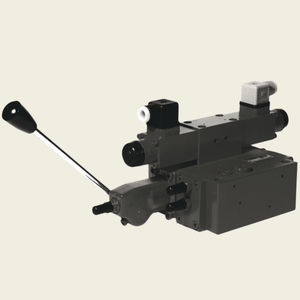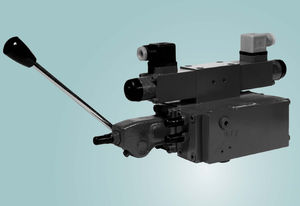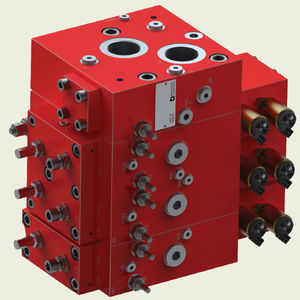
- Products
- Catalogs
- News & Trends
- Exhibitions
Spool hydraulic directional control valve LV serieselectrically-operatedcompactsectional


Add to favorites
Compare this product
Characteristics
- Type
- spool
- Actuating method
- electrically-operated
- Other characteristics
- compact, sectional, proportional
- Operating pressure
50 bar, 350 bar, 420 bar
(725 psi, 5,076 psi, 6,092 psi)- Flow rate
260 l/min, 280 l/min, 400 l/min, 600 l/min
(69 us gal/min, 74 us gal/min, 106 us gal/min, 159 us gal/min)
Description
This range of proportional valves is used to provide load-independent speed control of motors and cylinders. The LVS18 and LVS22 are operating according to the flow sharing principle. Also available with rapid-traverse and floading function
Advantages
Safe volumetric flow control by flow sharing principle, prevents the functional hold-up caused by undersupply.
Load-independent flow control, even with parallel operation of several acuators
Load feedback
Actuator sections with individual pressure compensators
Secondary pressure relief valves
LS pressure relief for the whole control block
With rapid-traverse and floating position
Energy saving by low pressure drop
Models
(Types of operator)
Electrohydraulic, proportional
Hydraulic
Manual (oil-tight enclosure)
Electrohydraulic proportional – manual, combined
Electrohydraulic proportional – hydraulic, combined
Onboard electronics
Applications
Mobile cranes
Ground drilling rigs
Container forklifts
Excavators
Wheel loaders
Telehandlers
Catalogs
No catalogs are available for this product.
See all of BUCHER Hydraulics‘s catalogsExhibitions
Meet this supplier at the following exhibition(s):

Related Searches
- Valve
- Hand valve
- Control valve
- Ball valve
- Threaded valve
- Regulating valve
- Lever control valve
- Stop valve
- Flap valve
- Non-return valve
- Directional control valve
- Piston actuator valve
- Metal non-return valve
- Oil valve
- Hydraulic valve
- 2-way valve
- Seat valve
- Compact valve
- Hydraulic directional control valve
- Fluid check valve
*Prices are pre-tax. They exclude delivery charges and customs duties and do not include additional charges for installation or activation options. Prices are indicative only and may vary by country, with changes to the cost of raw materials and exchange rates.







